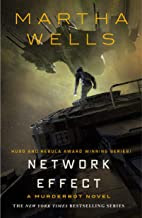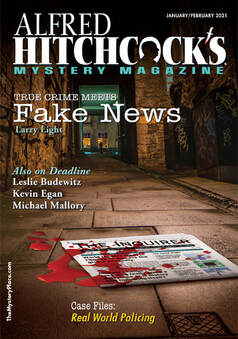Canada’s capital, Ottawa, finds itself in the midst of a protest and, like Alice in Wonderland, in a situation that gets curiouser and curiouser.
During my decades of living in Ottawa, protests have come and gone. Never has any protest disrupted the city and terrorized its occupants. There is something very different about this.
There are presently about 400+ trucks in Ottawa and a group of people that varies from hundreds to a few thousand who claim they are protesting vaccine mandates for truckers who cross the border.
For perspective, Canada has 38 million citizens, and at least 85% have had one dose of their COVID-19 vaccine and over 80% are fully vaccinated. In Ottawa, 91% of residents have their first dose of the COVID-19 vaccine and 88% are fully vaccinated. Further, I can walk into any grocery store or pharmacy in Ottawa and find everyone masked and happily shopping. As one of the most vaccinated countries in the world, Canada has also enjoyed one the most peaceful acceptance of mask mandates in world.
So, what has changed? Is it just the rebellious 9-15% taking a stand against vaccine mandates for truckers? Maybe. But it’s doubtful. In fact they may not even be truckers, “90 percent of Canadian truckers are vaccinated and the Canadian Trucking Alliance, which represents the industry in the country and does not support the convoy, has said most of the people in and around the protests “do not have a connection to the trucking industry.”
It’s also important to note that the United States has its own mandate about vaccination - so getting rid of Canada’s mandates wouldn’t allow these truckers to cross the border anyway, but I digress.
To understand what’s going on in Ottawa - a situation that has inflamed the world and resulted in copycat protests - you need to dissect it, look on the ground and look at how it evolved. When these protesters first came into Ottawa, it looked like any other protest. People with an opinion that differed from the federal government. They appeared to have a lot of support online and financially - this was to be proven incorrect.
Our first sense of real trouble came from reports from Centretown - the area in close proximity to this protest, where 50,000 residents live. The protesters swarmed in on our largest mall, defying the mask mandates for indoor spaces, with large groups of them shouting at minimum wage store clerks to take off their masks and be ‘free’. What a store-clerk removing her or his mask has to do with vaccine mandates for truckers to cross the border is perplexing, but here we were. The mall shut down and remained closed to protect their employees.
These protesters, angry about being shut out of restaurants with mask mandates, went to our most vulnerable and demanded food from soup kitchens. The frightened volunteers, unequipped to refuse, fed them.
Reports started to flood in about gangs of protesters yelling at residents to remove they masks and join the protests. People started to hide in their homes rather than venture out. Many complained about the inability to sleep because of the incessant honking all night and those with pets told us about their animals cowering under beds, shaking from the noise.
This is when Ottawa - a friendly and calm city - became angry. Soon reports came in from investigative journalists that the immense 10 million in financial support from Gofundme was not Canadian support, but largely foreign, “Donations from abroad are quite a common part of any large crowdfunding campaign,” Ciaran O’Connor, an expert on online extremism at the Institute for Strategic Dialogue, told Politico. “But the scale of this one is unprecedented.”
The Gofundme money was stopped - refunded I believe - and yet we saw the protesters go from stealing food from soup kitchens to setting up barbecues for everyone, beside bouncy castles for the children to enjoy. Yes, children, “Almost 25 per cent of the 418 trucks have children living in them — children who could be at risk during a police operation,”
As well, the apparent online support was largely from troll farms: “groups that weaponize social media to spread misinformation, promote division and influence public opinion.”
As the normally sanguine city of Ottawa got angry, Twitter became full of many who denounced all COVID-19 mandates and others who decried the Ottawa protesters.
As a physician, I’m puzzled what a world without any COVID-19 mandates would look like. Do we have unvaccinated, unmasked healthcare workers looking after children with cancer?
Even those who are against the protesters goals are at times worrisome - they are generating attacks on our mayor, our police and various levels of government for not being strong enough. It’s a distrust of the very institutions of our democracy at a level that’s new.
Canada, being a robust democracy, does not allow politicians to direct the police. Thank goodness because this could be abused. So, what about the police? Again, in a democracy, the police have limited powers (again, thank goodness) and are constrained by the budgets elected officials give them, limiting their numbers.
A democracy has certain tools and one of them is declaring a state of emergency. This allows the police more powers (not to be taken lightly) and also an increase in their numbers by drawing from other police forces. This is one thing that should have been done much earlier since the Ottawa police chief has been clear: he doesn’t have enough police to enforce even the laws he has at his disposal. We have never seen this large a group of protesters and Ottawa simply doesn't have the police numbers to manage to remove them. Rather than distrust the police, we should be giving them the help they have asked for repeatedly.
Luckily, we now have a declared state of emergency in our city and province, to give the police more powers. And hopefully Ottawa will get more policing help.
Michael Kempa - a professor of criminology at University of Ottawa - has helped to make a very curious situation much more understandable.
He identifies two distinct groups involved in the Ottawa protest. The first group are the ones we have been seeing on the news, alternating between yelling at the citizens and the media, to grilling burgers and setting up bouncy castles. They are the public face of this protest. A diverse group - only a few actually concerned about vaccine mandates for truckers at the border, some concerned with any mandates from vaccines to masks, some bringing their own issues like the need to fly a Nazi flag.
The group that worries Michael Kempa more are the ones we don’t see in the command centres of the protest. They are hard-core, long time anti-democratic organizers who fund, fuel and strategize for the protest in Ottawa and elsewhere. They don’t care about vaccines and mandates because they have been planning this trucker convoy since before COVID-19. Their goal is to damage our democracy by damaging our citizens trust in its institutions and to replace it with a far right, more authoritarian system.
With the new powers given to police under the declaration of a state of emergency both in Ottawa and in the province, Kempa is heartened that “Canada is starting to demonstrate that the institutions of democracy are strong, and capable of dealing the with the radicalized political threat…we cannot give the organizers the image that Canada’s institutions are too weak to handle their challenge of misinformation and mobilizing people to fight their battles for them at the front line of protest.”
This explains why a protest about truckers and vaccines has gone so out of control and why it has spread so quickly. For the organizers this was never about vaccine mandates and they have been planning this attack on our democracy for a long time.
To regain trust in our institutions, police need new powers but they also need larger numbers. After years of police cuts, it’s time to put enough police in play to protect against this new threat and fulfil the promise of the Canadian Constitution: Peace, order and good government.











































